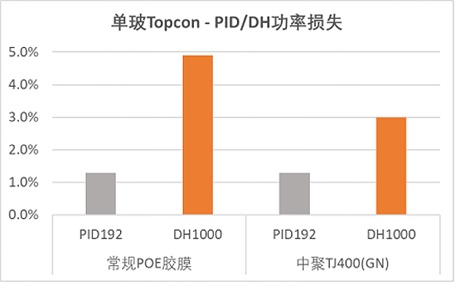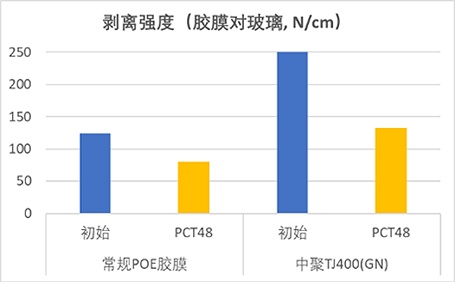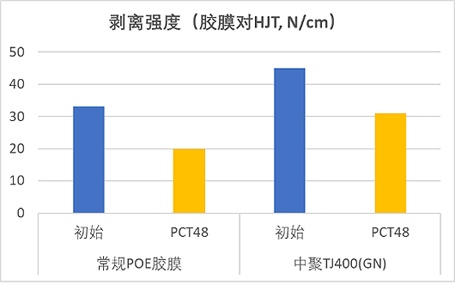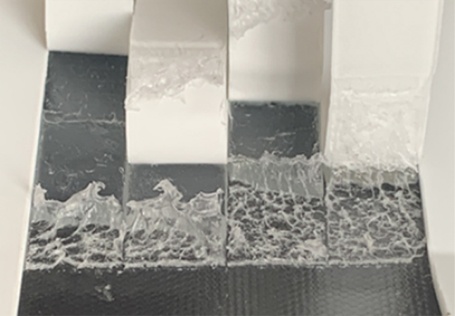
Photovoltaic Module Structure
Backboard Application
SINOPOLY co-extruded backsheet is a photovoltaic backsheet produced by advanced co-extrusion process, which has no risk of delamination between layers. The outer layer of the backsheet is made of a modified polymer material with excellent weathering properties, excellent hydrolysis resistance and anti-cracking properties, excellent water vapor barrier properties and better abrasion resistance; the inner layer is a modified polyolefin bonding layer, which is very compatible with the encapsulation film, improves the bonding force with the encapsulation film, and at the same time, improves the optical reflectivity of the backsheet as a whole.
Co-extruded backsheets significantly improve the outdoor reliability of PV modules and are suitable for all types of climatic applications, ensuring a high return on investment for PV power plants.
Encapsulating Film Application
SINOPOLY is committed to becoming a system solution provider. At present, we have a full range of basic specifications and a series of special specifications developed for N-type products. For example, for single-glass TOPCon front-side POE, the power attenuation of conventional POE after DH1000 is basically about 5%, while the performance of CIMC TJ400 (GN) in terms of resistance to moisture and heat aging has been significantly improved, and the attenuation after DH1000 is about 3% on average (Figure 5). Its anti-PID performance is also maintained at a relatively excellent level, in accordance with the old standards, do not do light recovery, PID192 attenuation is only about 1.3%. |
Figure 5: Single-glass TOPCon aging test (adhesive film combination: POE on the front; white EVA on the back) |
Figure 6: Peel strength of POE adhesive film on glass | It is worth mentioning that its vulcanization curve and lamination process is basically the same as that of conventional POE, so it can be seamlessly integrated into the current process; at the same time, it does not need to distinguish between the AB side, and there is no need to purposely control a certain side of the cell when laying the lamination. Further, SINOPOLY improves the bonding of the adhesive film to the surface of the community. Still take POE film as an example, conventional film and glass of the initial peeling force of 130-150N/cm, PCT 48 hours of accelerated aging is generally reduced to 60-80N/cm; in the polymerization of TJ400 (GN) initial peeling force can reach 250N/cm or more, the peeling force of the aging is close to the level of the initial peeling force of conventional adhesive film (Figure 6). |
| The improvement of peeling force for backsheets and cell wafers is similar. As mentioned before, the peeling force of the conductive oxide layer of the heterojunction cell wafers is relatively low with the conventional adhesive film, as can be seen in Fig. 7, the initial peeling force of the conventional adhesive film is only about 30, and it drops to about 20 after 48 hours of PCT, whereas the TJ400(GN) has roughly a 50% increase in peeling force, and it is still about 30 after aging. |
Figure 7: Peel strength of POE adhesive film on HJT battery cell |
Figure 8: SINOPOLY TJ400(GN) Peel Test on PERC Cells |
Figure 9: Peel test of SINOPOLY coextruded POE adhesive film J400X |
For conventional cells, like PERC and TOPCon, its performance is even more formidable, as can be seen from the peeling test results in Figure 8, the surface of the battery and the adhesive film did not delaminate, but rather the battery itself was destroyed, which proves that the adhesive film and the battery cell have become one.
EPE type of adhesive film combines the ease of processing of EVA and the durability of POE, but because the bonding between EVA and POE is not very good, delamination between E/P occurs from time to time, especially after moisture and heat aging. Meso-polymerization solves the bonding problem between E/P. Figure 9 shows the test of the peeling force of co-extruded POE film on glass. Because of the high peel force to the glass, the adhesive film tore itself and eventually delaminated from the backsheet. As can be seen here, there is no obvious delamination within the film, and all the tearing occurs in the form of filaments, which indicates that the E layer and the P layer have generated sufficient molecular interpenetration and chain entanglement at the interface, and it can also be assumed that the two phases have been merged into one at the interface.

Characteristics of SINOPOLY encapsulating film
In summary, SINOPOLY effectively improves the component's resistance to moisture and heat, and significantly improves the adhesion of the adhesive film to all surfaces, both inside and outside the film.






